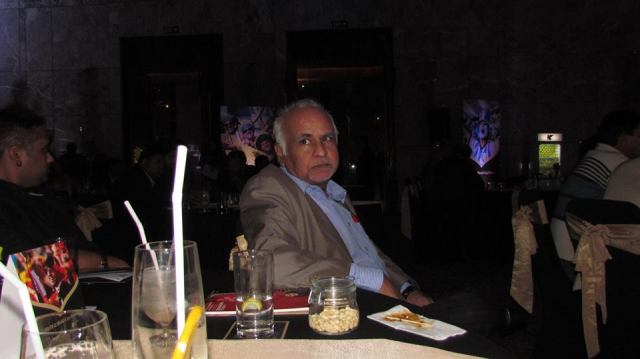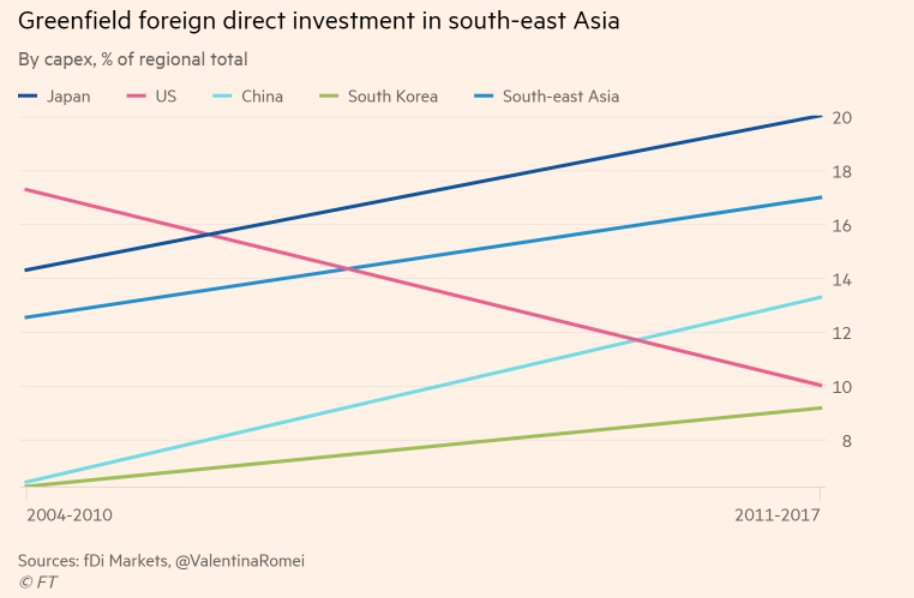BJP’s LG stands exposed of misusing Delhi Police to harass elected representatives
THE SHAMEFUL LETTER FROM BJP’s DELHI LG TO THE POLICE COMMISSIONER
BJP’s LG WORKING AGAINST THE PEOPLE AND ASKING THE POLICE COMMISSIONER HOW ARE THE AAP MEMBERS OUT OF JAIL ?
Delhi Police has been continuously arresting the elected MLAs of the AAP on false allegations and made-up cases as ordered by the BJP. The police has tried its level best to prepare wrong chargesheets against the MLAs , in order to defame their image and humiliate them.
AAP chief spokesperson Saurabh Bharadwaj said in a press conference that the MLAs of AAP are ill treated and their arrest is made public in order to spoil their image. The BJP’s central government was very much interested in the formation of fast track court which according to them could help them in proceeding in the cases against MLAs much faster so that the CM, ministers and the MLAs of AAP could be sent behind the bars as soon as possible. But in courts of law, truth and justice have prevailed and false cases against elected representatives of Delhi are falling flat one by one.
The court has also warned and scolded the Delhi Police for putting wrong allegations and filing false cases inspired by politics against the innocent.
We were expecting that the LG would write to the Police Commissioner and enquire about how the innocents are being framed and put behind bars for no reason and a detailed investigation should be done on the Delhi Police, which has unfortunately become the personal cell of BJP where they can frame political opponents, make up their own stories and file cases and put anyone in prison.
But to our utter surprise, a shocking evidence has been revealed, which states that instead of enquiring about the careless deeds of Delhi Police, the BJP’s LG has written a letter to the Delhi Police Commissioner, asking about how and why the MLAs are getting acquitted and how cases against them are being quashed one by one, the LG has asked for report from the police that within one week how are the MLAs have been proved to be innocent.
The BJP’s LG is specially bothered about how did Amanatullah Khan got a dignified release from the jail and the case against him was quashed by the court. The Delhi Police was also scolded for reopening a five year old case again in 2015, after Amanatullah Khan was elected as an MLA.
This is very unfortunate, that the LG, who holds a constitutional post, is worried about how the Delhi CM Arvind Kejriwal, Deputy CM Manish Shishodia, Kailash Gehlot, Naresh Balyan and Manoj Kumar MLA from Kondli were acquitted in courts, whereas the LG wanted them to be behind bars.
This act of BJP’s LG is really shameful not because he is the LG but because it is not his age to perform so many sins and rather focus on good deeds and earn respect.
It is beyond any reasonable understanding as to why the LG, who is incharge of Delhi Police is misusing this force, instead of concentrating on the safety and security of the residents of Delhi, given the fact that women safety is one of the major concerns of the residents of Delhi.
BSE Institute exchanges MoU with IIT Madras
BSE Institute exchanges MoU with IIT Madras to offer joint program in Business Analytics

New Delhi, May 16, 2018 – BSE Institute Ltd, the leader in financial education, has signed a Memorandum of Understanding (MoU) with IIT Madras to offer joint program in Business Analytics.
The MoU was exchanged at IIT Madras campus between Mr. Ambarish Datta, MD and CEO, BSE Institute Ltd and Dr. Ashok Kumar Mishra, Professor. Dept. of Chemistry and Dean- Academic Research in the presence of Dr. V. Kamakoti, Professor Department of Computer Science and Engineering, IIT Madras and Mr. Pradeep Chowdhary, Senior Manager, BSE Institute Ltd.
Both BSE Institute and IIT Madras endeavor to provide world-class education to the students through collaborative programs. In addition, the collaboration will also lead to opportunities of joint research and facilitate industry exposure for students of both the institutions. It will provide excellent opportunities to students from both the cities who aspire for an optimal learning environment, with a diverse peer group, and a global, lifelong network of trusted connections.
Business Analytics Program enables working professionals with in depth understanding of the key technologies used in analytics, viz. data mining, machine learning, visualization techniques and statistics. Through this program one can turn the sheer complex data into a competitive advantage with the efficient use of Business Analytics & thereby fostering / supporting the decision making. The program is designed on a schedule that minimizes disruption of work and personal pursuits, spread over one year (part-time) focusing on overview of the field of analytics so that you can make informed business decisions.
“The Program is designed to enable learners in the use of statistical analysis, computing tools, and mathematical models to predict the outcomes of various business decisions, and identify the best implementation.
The use of business analytics has grown exponentially in all areas, including financial services, healthcare, government, retail, e-commerce, media, manufacturing, and the service industry. This has led to an increase in the demand for employees with an analytical approach to management who can utilize data, understand statistical and quantitative models, and are able to make better data-driven business decisions. We also expect successful learners to gravitate toward start-up organizations.” said Mr. Ambarish Datta, MD and CEO, BSE Institute Ltd
“As we enter the digital era, data holds the key. It is the next generation oil to fuel the economic growth of any Organization. This certificate program will introduce and train one on the fundamental building blocks required for high-end data analytics across all disciplines of applications including but not limited to legal, commerce, economics, engineering, science and humanities” said Dr. V. Kamakoti, Professor Department of Computer Science and Engineering, IIT Madras
Voltas’ Consolidated Financial Results
Voltas’ net profit fell 3.13% to Rs 194.19 crore on 1.15% increase in net sales to Rs 2021.30 crore in Q4 March 2018 over Q4 March 2017. Voltas focus on process improvements and better commercial terms is reaping benefits, as EMP margins have improved to ~7%.
Voltas’ Consolidated Financial Results: Voltas results dwindle as per the Q4FY18 consolidated net profit (excluding exceptional items) declines 2.36% yoy to Rs195.58cr :
Voltas’ Consolidated Financial Results: Voltas results dwindle as per the Q4FY18 consolidated net profit (excluding exceptional items) declines 2.36% yoy to Rs195.58cr :

FY 2017-18
|
FY 2016-17
|
%
| |
Rs. Crores
|
Rs. Crores
|
change
| |
Profit after tax
|
578
|
520
|
11%
|
Profit before tax
|
805
|
720
|
12%
|
Total Income
|
6602
|
6307
|
5%
|
May 17, 2018 New Delhi: The Board of Directors of Voltas Limited, the global air conditioning and engineering services provider of the Tata Group, today announced the Consolidated Financial Results (including the Consolidated Segment Report) for the quarter and year ended March 31, 2018. The Company has adopted Indian Accounting Standards (“Ind-AS”) from 1st April, 2016 and the accounts have been accordingly prepared.
Consolidated Results for the year ended March 31, 2018:
The Consolidated Total Income for the year ended March 31, 2018 was higher by 5%, at Rs. 6602 crores as compared to Rs. 6307 crores last year, owing to improved efficiencies across businesses. Profit before tax was higher by 12%, at Rs. 805 crores as compared to Rs. 720 crores not withstanding lower other income of Rs. 174 crores in the current year as compared to Rs. 212 crores last year. Profit after tax was also higher by 11%, at Rs. 578 crores as compared to Rs. 520 crores last year. Earnings per Share (Face Value per share of Re. 1) as at March 31, 2018 improved to Rs. 17.30 as compared to Rs. 15.64 last year. Total Comprehensive Income, including notional mark to market revaluation gains / losses on equity investments, foreign currency translations, etc. for the year was higher at Rs. 741 crores as compared to Rs. 601 crores last year.
Consolidated Results for the quarter ended March 31, 2018:
The Consolidated Total Income for the quarter ended March 31, 2018 was at Rs. 2092 crores as compared to Rs. 2098 crores in the corresponding quarter last year. However, Profit before tax was higher by 14%, at Rs. 284 crores as compared to Rs. 250 crores in the corresponding quarter last year. Profit after tax was at Rs. 194 crores as compared to Rs. 200 crores in the corresponding quarter last year. Total Comprehensive Income for the quarter was Rs. 257 crores as compared to Rs. 246 crores in the corresponding quarter last year.
Consolidated Segment Results for the year ended March 31, 2018:
Electro-Mechanical Projects and Services: Segment Revenue for the year was higher at Rs. 2845 crores as compared to Rs. 2655 crores in the corresponding period last. Segment Results was significantly higher at Rs. 185 crores as compared to Rs. 85 crores last year, reflecting better quality of orders and efficient execution both in domestic and international business. Carry forward order book of the Segment stood at Rs. 5062 crores as compared to Rs. 4321 crores last year.
Engineering Products and Services: Segment Revenue and Results were Rs. 310 crores and Rs. 99 crores as compared to Rs. 332 crores and Rs. 96 crores, respectively last year. The slowdown impact due to demonetization and GST implementation in the Textile Machinery Industry is well known. In Mining and Construction Equipment, Mozambique operations continue to drive the performance.
Unitary Cooling Products for Comfort and Commercial use: Battling intense competition, Voltas continues to be the market leader in Room Air-Conditioners with a market share over 22% across the year. The Company has also ramped up its product mix to gain market share in the inverter AC segment. Segment Revenue was higher at Rs. 3226 crores as compared to Rs. 3047 crores last year. Revenue for current and previous year are not comparable as Revenue for current year has been adjusted for applicable taxes. Segment Results was also higher at Rs. 475 crores as compared to Rs. 440 crores last year.
Japan invest spree in Myanmar
Japanese companies second largest investor after China in Myanma

Japan is aggressively investing in Myanmar, even as their European and American counterparts shy away while hundreds of thousands of Rohingya Muslims crisis..
Japan’s businesses to devote a record $1.47 billion to the Southeast Asian nation for the fiscal year ended in March, according to the Japan desk at Myanmar’s Directorate of Investment and Company Administration. The figure, which includes money coming through foreign subsidiaries, made Japan one of the biggest investors in Myanmar for the year. Its previous record was $1.02 billion from fiscal 2014.
By immediate country of origin, China topped the list at over $1.39 billion. But that nation invests less through indirect foreign channels, a DICA source said.
Japanese investment went into property development. Fujita and Tokyo Tatemono are working with a local company on a 16,000-sq.-meter commercial facility near the Shwedagon Pagoda, a tourist attraction in Yangon. The government-backed Japan Overseas Infrastructure Investment Corp. for Transport & Urban Development holds a stake in the project as well.
Kajima was selected by the Japan Conference on Overseas Development of Eco-Cities, a body founded by Japan’s transport ministry, to participate in another project with Myanmar’s government. The two projects are each worth over $300 million.
Companies are eager to make further inroads in Myanmar, which has a population of about 50 million. Many are building new import hubs and working to boost local production, especially in the Thilawa Special Economic Zone near Yangon jointly developed by Japan and Myanmar.
GS Yuasa looks to spend about $100 million through a Thai subsidiary on a new import hub in Thilawa for home and car batteries. JFE Steel is building a plant for hot-dip galvanizing steel, where the JFE Holdings unit plans to produce high-quality steel sheets. And Fumakilla is constructing a factory that will allow local production of its pesticide sprays.
Total investment in Thilawa reached $400 million last fiscal year, with $239 million coming from Japanese companies. A substation built with Japanese official development assistance went online in the zone in February, greatly reducing the risk of a power outage. Roads and other infrastructure are under development as well.
Myanmar received $6.11 billion in foreign investment during fiscal 2017, down by 11% to drop for the second year in a row. But Kazufumi Tanaka, who heads the Yangon office of the Japan External Trade Organization, said investment is not necessarily declining.
“If we look closely, billion-dollar deals like bids on natural gas blocks or [Vietnamese company] Viettel’s investment in the Myanmar mobile market temporarily pushed up the total for fiscal 2015 and fiscal 2016,” he said.
Chinese and South Korean companies are investing in cut-make-pack operations in Myanmar’s garment industry, while Unilever was cleared in April 2017 to invest in local production of detergent and shampoo.
Toshiba fiscal constraints over
Toshiba can leave its the worst of its financial troubles behind and begin building a new growth engine to replace the chip memory unit, its top earner.

Chinese authorities have finally granted approval for the Japanese electronics conglomerate to sell the unit, and it plans to do so by June 1, the company said Thursday. An international team of buyers led by U.S. private equity firm Bain Capital, which will become the top shareholder, will pay roughly 2 trillion yen ($18 billion), of which Toshiba will keep around 1.45 trillion yen. Toshiba will also retain a roughly 40% stake that is expected to keep earning about 67 billion yen per year.
South Korean memory maker SK Hynix will also contribute financing, while U.S. computing companies Apple and Dell will get preferred stock. Japanese optical product maker Hoya will take a roughly 10% stake. Toshiba will also work with other participants on issues like adding production capacity, seeking to compete with market leader Samsung Electronics.
Toshiba need to get to better design strategy to achieve higher margins of profits. Toshiba minimum need to quickly reach the 10% range, the memory unit, which generated about 90% of operating profit need cash rich products in its arm. Toshiba focus the semiconductor segment more on automobiles, including power chips for electric and other vehicles, seeds that could grow into new businesses, including lithium-ion batteries, logistics robots in pipeline for its futuristic growth.
With kitty of 500 billion yen in debt and returning capital to shareholders, Toshiba aims to “channel much of the large capital infusion into fields with strong investment returns and achieving growth,” recently appointed CEO Nobuaki Kurumatani said at a Tuesday earnings conference. The company is narrowing its list of potential targets and aims to start investing this year.
Toshiba is rebuilding itself around new core segments of energy systems and infrastructure. Toshiba lacks the scale and profitability to compete on the world stage with giants specialize in their products. Acquisitions in fields like air conditioners and elevators seem promising, one analyst at a securities firm based outside Japan said, adding that the company may also reorganize by turning listed group companies into wholly owned subsidiaries.
It currently makes a roughly 2% operating profit margin on sales, while international rivals like General Electric and Siemens boast double-digit margins. Japanese compatriot Hitachi’s is around 8%.
Toshiba remains on the pile of liabilities, including those from a liquefied natural gas export facility under construction off the U.S. state of Texas, the Freeport LNG project, from which it has contracted to buy large volumes of fuel. The market for the gas has cooled unexpectedly, and Toshiba is having trouble finding buyers. The company is also looking to sell its money-bleeding PC business.
Reforming corporate governance also remains a concern. “It is vital to strengthen our transparency, internal communication and oversight capabilities,” Kuramatani said.
Alembic Pharma Q4 profit of Rs 93.79 Cr
Alembic Pharmaceuticals has reported consolidated net profit of Rs93.79 crore for the quarter ended 31 March, 2018.

The company had posted a net profit after taxes, non-controlling interests and share of profit/(loss) of associates and joint ventures of Rs 93.04 crore for the corresponding period of the previous fiscal, Alembic Pharmaceuticals said in a filing to BSE.
Consolidated revenue from operations of the company stood at Rs 853.31 crore for the quarter under consideration. It was Rs 741.35 crore for the same period year ago.
For the fiscal year ended March this year, the company posted a net profit of Rs 412.63 crore as against Rs 403.16 crore for the year ago period. Consolidated revenue from operations stood at Rs 3,130.81 crore for the fiscal year 2018. It was Rs 3,134.61 crore for the previous fiscal period.
The US generic business grew by 45% during the quarter despite a challenging and dynamic business environment, Alembic Pharmaceuticals MD Pranav Amin said.
The company said its board has recommended a dividend of Rs4 per equity share having face value of Rs2 each.
No comments:
Post a Comment